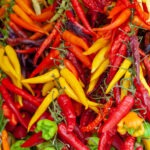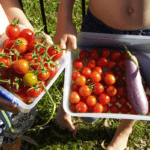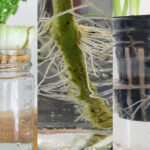This post may contain affiliate links.
It may surprise you to know that green chillies and red chillies come from the same plant, just one is ripe,and one is picked early. Of course, there are many, many varieties of chilli pepper plant (chile or chili to our US friends, the double l in chilli is the British English version also used in Australia) but they’re all pretty easy to grow and many can be grown from store or supermarket-bought chilli seeds. In fact almost every hot chilli pepper in my garden (and there are many!) came from chillies we bought to eat at the supermarket years ago. Once you have a few chilli plants in your garden, or in a pot indoors, you’ll probably never need to buy one again. The same goes for chilli sauces and dried chillies. You can be self-sufficient in hot or mild green chillies easily and growing your own green chillies should save you money.
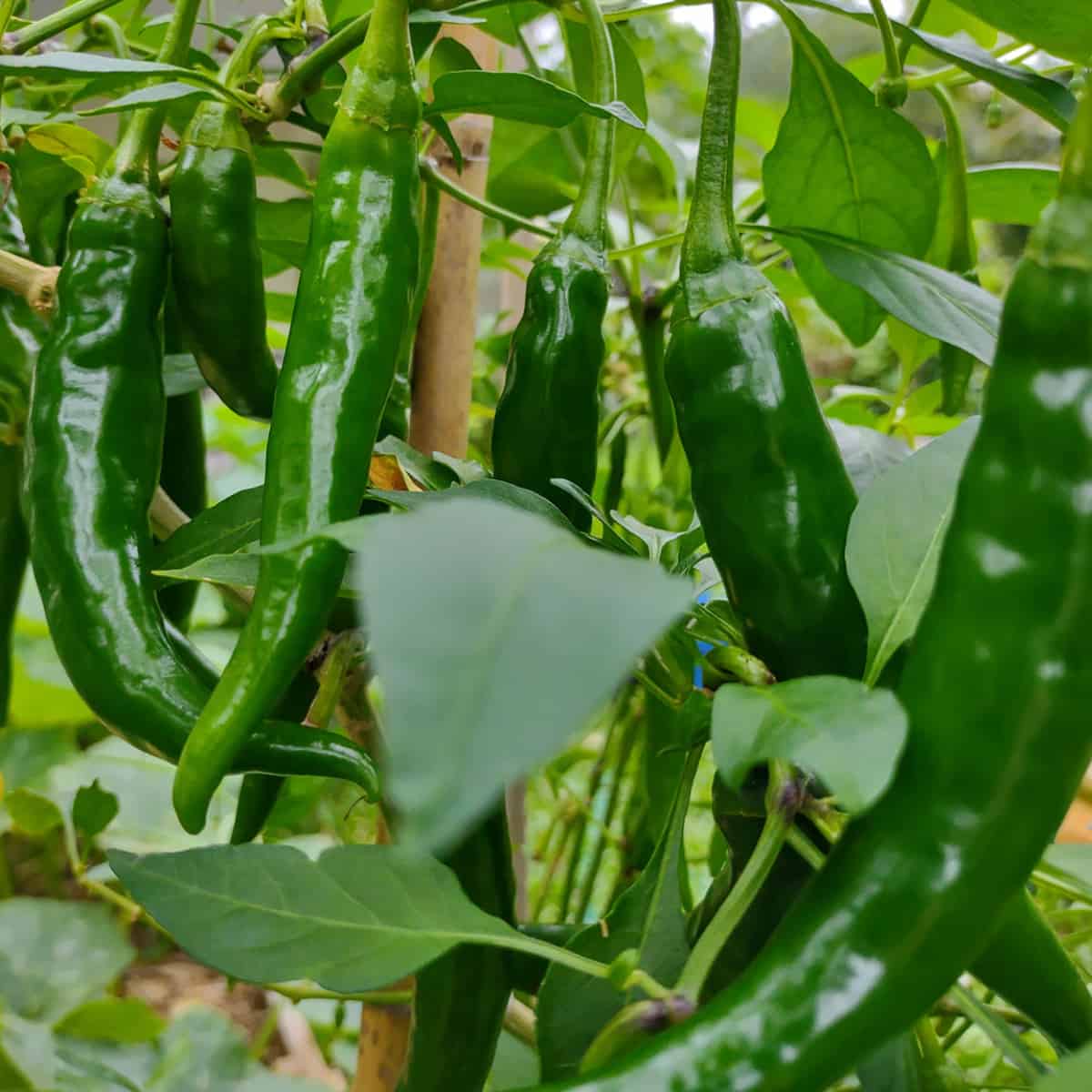
Green Chillies
Our post is about green chillies, growing them, using them, and caring for your green chilli plants.
Growing Green Chillies From Seeds
Yes you can, absolutely, grow chillies from stote-bought chillies. If you plan to do this buy a red chilli.
These fruit will have more mature seeds than green.
Simply split the chilli with a sharp knife and scrape out the seeds. There’s no need to dry the seeds or process them, just plant them.
That said, the seeds do stay viable for a long time. I’ve even had seeds from dried chillies and those that have been kept in the fridge for weeks germinate.
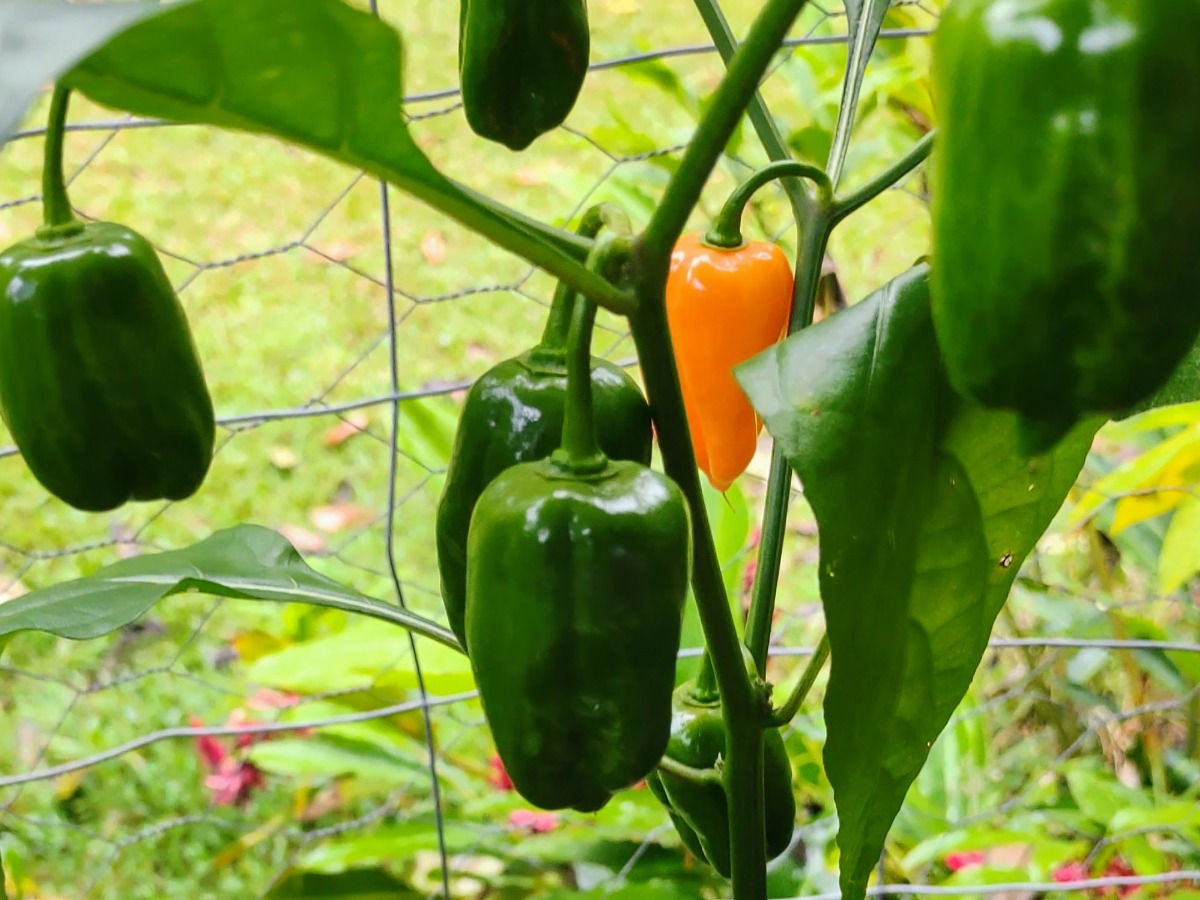
They do like a bit of heat to germinate however. Use good quality seed compost and just bury then less than half a cm deep. Keep them moist and wait for germination.
Alternatively you can germinate chili seeds on wet kitchen paper before potting them up.
Once your seedling are big enough to handle easily you can transpant them to their permanent homes. Of course you can sew them in-situ too, but seeds in pots are generally easier to baby-along.
There is some chance of cross-pollination between varieties of chilli plants, but I’ve not yet seen a weird hybrid, all my chilli plants are identical to their parents so far.
What Time of Year To Plant Green Chili Seeds?
If, like us, you enjoy a warm tropical climate, you should have success in sewing green chillies at any time of year. In colder climates you need to wait until the weather warms up in spring. When exactly, will depend on you garden or hardiness zone.
You can buy chili seeds online, in a store, or use the seeds from a store-bought or supermarket chili. Alternatively, you should be able to buy chili plant starts at your local nursery, but this is the most expensive way to grow green chillies.
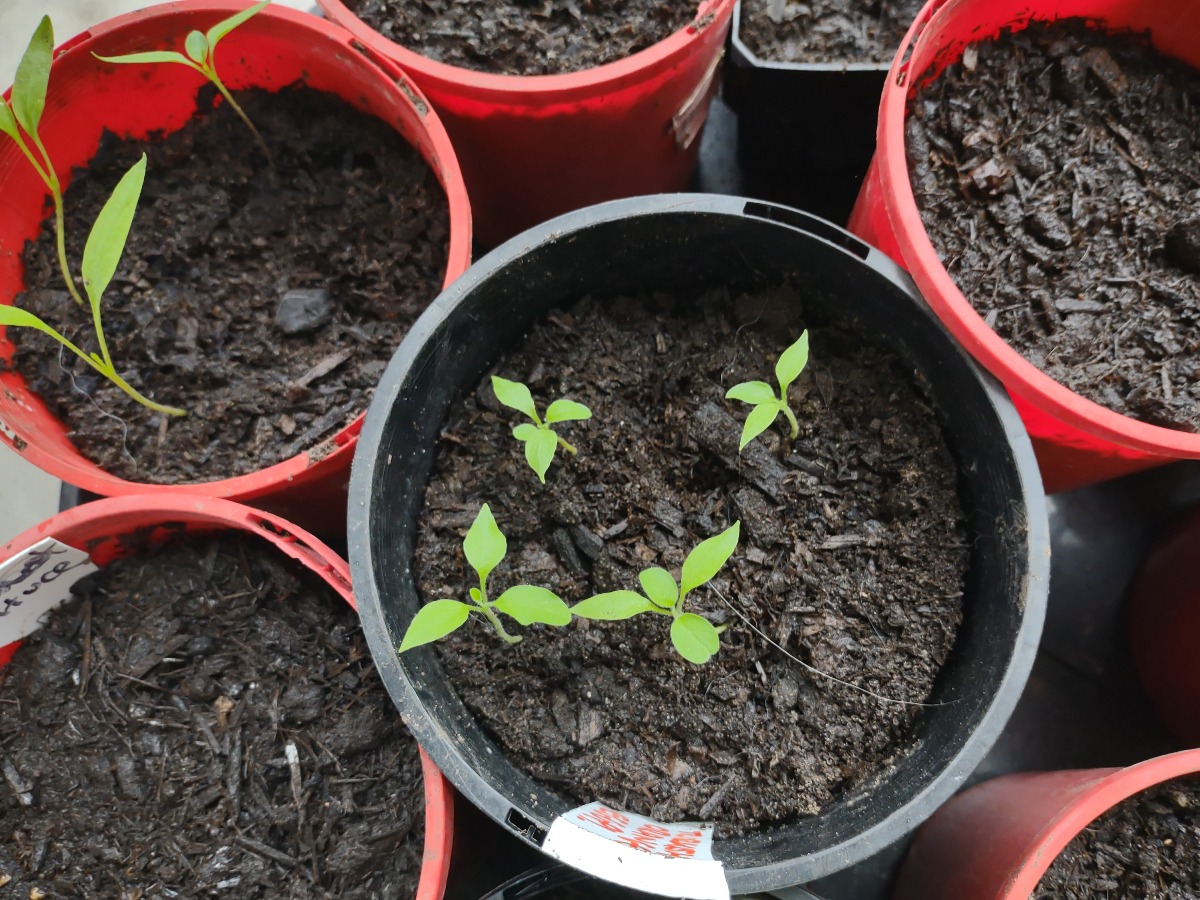
If you live in a very cold climate you may do better growing green chillies in a greenhouse or even indoors in pots. You will certainly need to bring your chillies indoors to over-winter them if you get a frost.
In the tropics our chili plants grow as perennials, they grow year round and produce flowers and chillies year-round with some seasonal variation in quantity and quality.
What Temperatures Do Chili Plants Need To Grow?
12C, 54F is normally recommended as the minimum night time temperature for chili plants and a frost will certainly kill them. In practice, you can grow chillies in cooler temperatures depending on the species and its well worth experimenting. In winter we get below 10 C and as low as 3C and some varieties of chili do very well indeed.
If it gets above 30C you may start running into problems with chillies, provide shade and ventilation, they should be grown in full sun, which means at least 6 hurs of sun per day. I have chilies growing in deep shade, so break the rules and see what works for you.
Can Green Chillies Be Propagated From Cuttings
Yes, we have grown new chili plants from cuttings of an existing chili plant. Simply cut a branch, strip it of all leaves other than those at the growing tip, and place the branch in a jar of clean water in a warm spot, once roots appear at the base, pot your new chilli plant up into potting compost.
You can, of course, also put your cutting into moist potting coompost to clone the plant. It helps to put a plastic bag over the plant to help it along at first, this keeps moisture in and may keep the plant a little warmer.
What To Do With Green Chillies?
Obviously, you can just pick your green chillies and eat them raw or use them in cooking straight away.
I always find I have way too many to use up like that. My green chilli harvest runs into Kgs and my plants produce all year so I employ many of the following methods to preserve or store my green chilli harvest.
- You can freeze them
- Green chillies can be dried in the oven, sun, or a dehydrator.
- Process dried chillies in a blender to make flakes and powders.
- Make chutneys
- Ferment them.
- Process raw, fermented, or cooked chillies to make chilli sauces and condiments.
- Make chilli jam.
- Make chilli cheese, the national dish of Bhutan, ema datshi.
My favourite way to deal with chillies is to ferment them. It’s easy and the fermentation process adds to the fruit’s health benefits.
I then use these fermented green chilis to make a green chilli sauce that has an interesting flavour, not the same as the red chillies I process in the same way.
Growing Green Chillies in the Tropics
We live in the tropics so we have one big advantage, our chilli plants grow and produce fruit all year round.
Chillies are actually one of the easiest food plants to grow in the tropics and are extremely useful and productive.
The chillies grow equally well in summer and winter and the plant’s second year, a bigger plant, produces far more fruit than the first.
Some varieties and species of chilli do die off, usually in winter after producing a good harvest, but most of our chilli plants grow on for years.
My oldest chilli plant ever was seven years old, a Thai birdseye chili which thrived on neglect. These plants are very much native to the tropics and will even volunteer from bird droppings.
Growing Green Chillies in Pots
It’s my experience that chilli plants grow equally well in pots, the ground, and raised beds.
We have some in each and provided the soil is equivalent and water supply good, they grow just fine.
Choose the best quality potting soil you can find because some cheap mixes have no nutrients in them. If you make your own fertilisers, such as worm tea and compost, use these to improve and amend soil and feed your plants. Choose the biggest pot you’ve got, chilli plants can get pretty big in the tropics, we have plants up to about 1.5m tall.
One advantage of growing green chillies in pots is that you can move your plants. If you live somewhere where temperatures get low you can even bring them indoors if a cold snap is due.
In cooler climates chillies in pots can be over-wintered indoors to sprout again next summer. My chili plants do equally well in full sun and part shade, so long as watering is consistent and soil is good. It’s always a good idea to protect very young plants from full sun incase they dry out in very hot weather.
Remember, we grow food in the tropics, our sun is intense. In cooler places, you may find full-sun the best option. If you’re growing chillies indoors, find a nice window facing the sun for as long as possible.
Pests on Chilli Plants
We have found that our chilli peppers disappear from time to time. I was scratching my head and wondering what was eating my chillies until we saw the culprits.
Flocks of red-eyed birds were descending on my chilli plants and stripping them bare in minutes. These plants were huge Thai chilli plants, like small trees, and these birds would strip the lot.
Another chilli eating pest is mice, or maybe rats. If you have rodents about they will most certainly eat your low-hanging chillies and don’t care how hot they are.
Fruit fly is the third major enemy of tropical chilli growing.
The fruit fly larvae growing inside the chilli fruits makes them soft and mushy, they will eventually drop to the ground and the next generation of fruit fly will emerge. This is one reason to pick your chillies green, the fruit fly normally don’t attack them so much green as they do red. If you see a chilli fruit looking soft and damaged, pick it and dispose of it. We put our fruit-fly damaged fruit in the freezer prior to putting it out in the trash. You need to halt the fruit fly life-cycle.
I’ve seen green shield bugs on ripe chillies occasionally too, but mostly they prefer my tomatoes, so they’re not a major problem. I squish on-site as I refuse to use chemicals. We grow organically as much as possible.
So enjoy your green chillies! Chilli plants are possibly my favourite tropical garden vegetable (they’re really a fruit, but vegetable covers it) because they’re just so easy and prolific. I love that you can do so many things with chillies and that I can pick them literally every day of the year. If not – my freezer is full!
